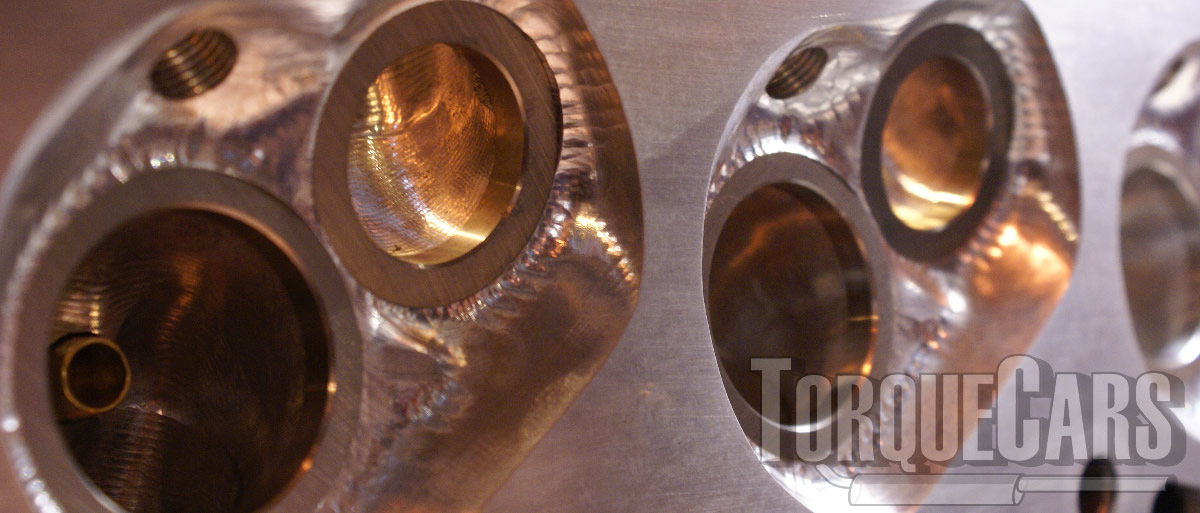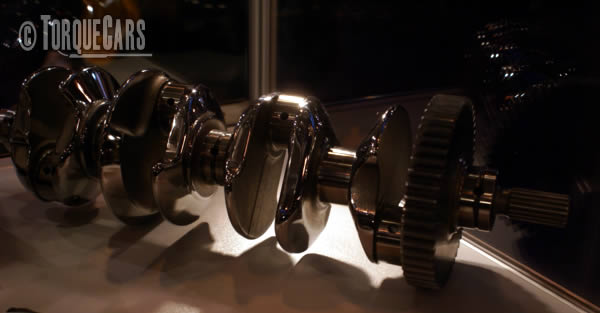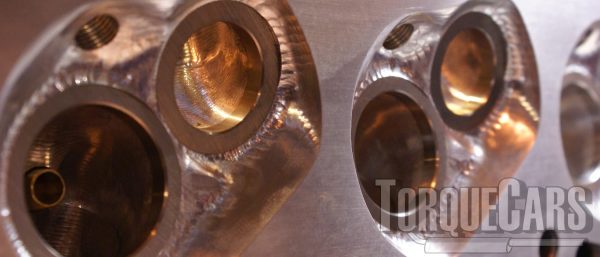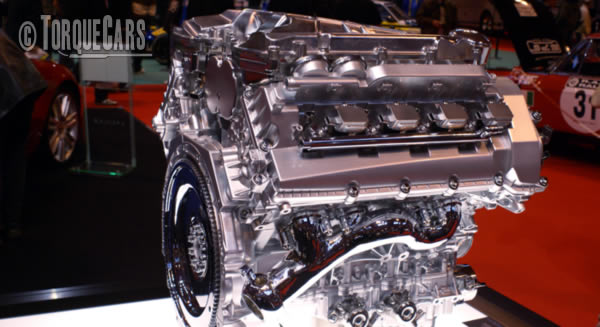Cryogenic Treatments
"Find out why Cryogenic Engine Treatments Are So Cool! Benefits & Advantages"

When putting more power through an engine you need to ensure that every part will perform at its optimum.
One of the motorsports favorite techniques to improve the durability of an engine is a relatively unknown and new (to the automotive world) process know as cryogenic treatment.
As you can guess from the use of the word Cryo - it involves the cooling (and sometimes heating) of the engine block to temper the metal changing its structure.
When you consider the cost of a built engine, it makes sense to protect that investment and the process of cryogenic treatments extends the strength, durability and wear resistance of metals.
How much improvement can you see?
Motorsport teams are reporting that engines that need rebuilding after half a season are lasting a whole season or two.
When engines are stripped down the wear is noticeably lower. The Cryo treated metals are more easy to work with and can have up to 6 times improved wear resistance.
There are fewer failures such as cracking, or shearing or fatigue related engine problems in high performance engines.
What is tempering metals?
We understand the process of tempering metal and the way it alters the metals structure.
In metallurgical terms, tempering is a heat treatment process used to improve the toughness and ductility of a material, typically a metal alloy. This is achieved by heating the material to a specific temperature and holding it at that temperature for a certain period of time, followed by cooling the material to room temperature. The temperature and duration of the tempering process depend on the specific material and the desired properties.
During the tempering process, the material undergoes a transformation where small, uniform grains are formed in the microstructure, which helps to reduce brittleness and increase toughness. The process also relieves internal stresses in the material that may have been introduced during earlier processing steps.
Tempering is often used as a post-quenching treatment for materials that have been hardened through a process such as quenching or annealing. It is commonly used in the production of steel, where it is used to adjust the hardness and strength of the material to meet specific requirements for different applications.
Cryogenic Cooling Of Engine Components
When metal heats up it expands, and conversely when it cools it contracts. If you can supercool the metal the molecules will be tightly packed, and then when this is raised back to normal temperature the metal expands.
The beauty of this process is that the structure of the metal is much more uniform, much more so than when the metal was first cast.
This results in harder and more durable metal components.
Cryogenic Treatments
First the engine is slowly cooled in liquid nitrogen.
The liquid nitrogen is added to the sealed tank in very precise measures, too fast and you risk causing stress fractures in the metal.
Generally speaking you need to cool the metal to at least -300 °F but more of a reduction will provide additional benefits. (Engines left in the cold winter weather have noticed improvements in strength and some cryogenic processes are effective at around -184 °F.
After you have reached around -350F the engine temperature is slowly raised up again and the metal settles with it's new capabilities.
The actual temperatures, and speed of the transition will vary depending on the metallurgical properties of the material and your desired aims.
This process can be repeated 3 or 4 times over the course of a week. The process will work on any metal engine part and the common benefit is for hardening the block, pistons and crank and reducing surface friction.

Don't put complete engines in the cryo process as metals contract at different rates and this can cause damage. Also many of the gaskets and seals used will have a change in their structure reducing their effectiveness and potentially damaging them.
We've heard of cryo treated brakes which last longer and prove to better at dissipating heat.
The camshaft is also a high wear area of a performance tuned engine and will benefit from Cryo treatment.
It is best that the parts are Cryo treated separately and then assembled.

Benefits from cryogenic engine treatments.
The cooling and heating of the metal aligns the 'metal molecules' and allows them to be much more tightly packed together.
This cooling and heating actually traps carbon atoms that do not have time to diffuse out of the crystal structure.
It forms a more symmetrical crystalline lattice which is much tougher than untreated metal.
During the cryogenic treatment process, the material undergoes several changes at the molecular level. One of the most notable changes is the transformation of retained austenite to martensite, which leads to an increase in hardness and wear resistance. The process also causes the formation of fine carbides and nitrides, which can improve the material's wear resistance and toughness.
Austenite is a phase of iron and steel that exists at high temperatures, typically above 912°C (1674°F), known as the austenitic phase. It is a metallic, face-centered cubic (FCC) crystal structure that is stable at high temperatures.
Austenite is important in the steel industry because it is the phase that allows for the formation of other microstructures such as martensite, ferrite, and pearlite through heat treatment processes. When austenite is cooled rapidly, it transforms into martensite, a harder and stronger phase. When it is cooled slowly, it can transform into ferrite and pearlite, which have different mechanical properties.
Austenite is also important because it has a high solubility for carbon and other alloying elements, which allows for the creation of many different types of steel with different properties by adding small amounts of other elements.
Benefits of Cryo treatments
In addition to these changes, cryogenic treatment can also help to relieve residual stresses in the material, which can improve its dimensional stability and reduce the likelihood of cracking or distortion. The process can also help to refine the grain structure of the material, leading to improved mechanical properties.
Known as a Martensitic structure this process has been used to strengthen blades and cutting surfaces and is now being applied to engine tuning.

It allows the head gasket and valves to seat better and this will also improve engine efficiency and power. It also improves the lubricity of 2 surfaces as there are less friction causing imperfections again raising the power output of the engine.
Rather than just affecting the surface of the metal the slow temperature changes allow the entire metal to attain the benefits.
Any stress points in the metal are thus removed and the result is that the engine is much harder and will cope with a lot more stress. It will reduce the likelihood of microcracks forming and propagating through the material.
The internal friction of the surfaces is reduced giving an instant power gain.
Because internal friction is lower the engine is more reliable and some sources quote 8 times the wear resistance for certain metals after a Cryogenic treatment along with improved tensile strength.

There are not many places offering this service but there are some specialists out there.
The relative cost to benefit ratio is fantastic and will give you a distinct advantage in the competitive motorsports arena allowing you to raise the bar of your engine power.
Not only will you gain power and a longer engine life you will also get better fuel consumption as the engine is more efficient with less internal friction. TorqueCars see Cryogenic treatments as a win/win situation.
We anticipate that performance parts suppliers will be listed "cryo treated" items as premium parts alongside their usual catalogues. As interest in this grows you are best to get in there quickly and gain the competitive advantage.
To discuss all aspects of engine tuning please join us in our friendly chat forum and benefit from the experience and wisdom of our resident car tuning enthusiasts.
Please Check out my YouTube channel, we're regularly adding new content...
PLEASE HELP: I NEED YOUR DONATIONS TO COVER THE COSTS OF RUNNING THIS SITE AND KEEP IT RUNNING. I do not charge you to access this website and it saves most TorqueCars readers $100's each year - but we are NON PROFIT and not even covering our costs. To keep us running PLEASE Donate here
If you liked this page please share it with your friends, drop a link to it in your favourite forum or use the bookmarking options to save it to your social media profile.
Feedback - What do You Think?
Please use our forums if you wish to ask a tuning question, and please note we do not sell parts or services, we are just an online magazine.
Help us improve, leave a suggestion or tip
Please watch this video and subscribe to my YouTube channel.
4 Responses to “Cryogenic engine treatments”

 Click to accept YouTube Cookies & Play.
Click to accept YouTube Cookies & Play.
In the note about Cryogenic treetment of engine castings etc, nothing was mentioned about wether the block would need re-line boaring or the cylinders rebored/honed because of the “relaxing” of the metal. Woulden’t this be required?
Very good article, Now has anyone heard of the same results achieved with vibration treatment?
Brake discs and pads will have a longer life and better heat dispersion + no heat cracking of the disc
As its on a molecular level it does not alter the dimensions of the item in any way that would be measurable